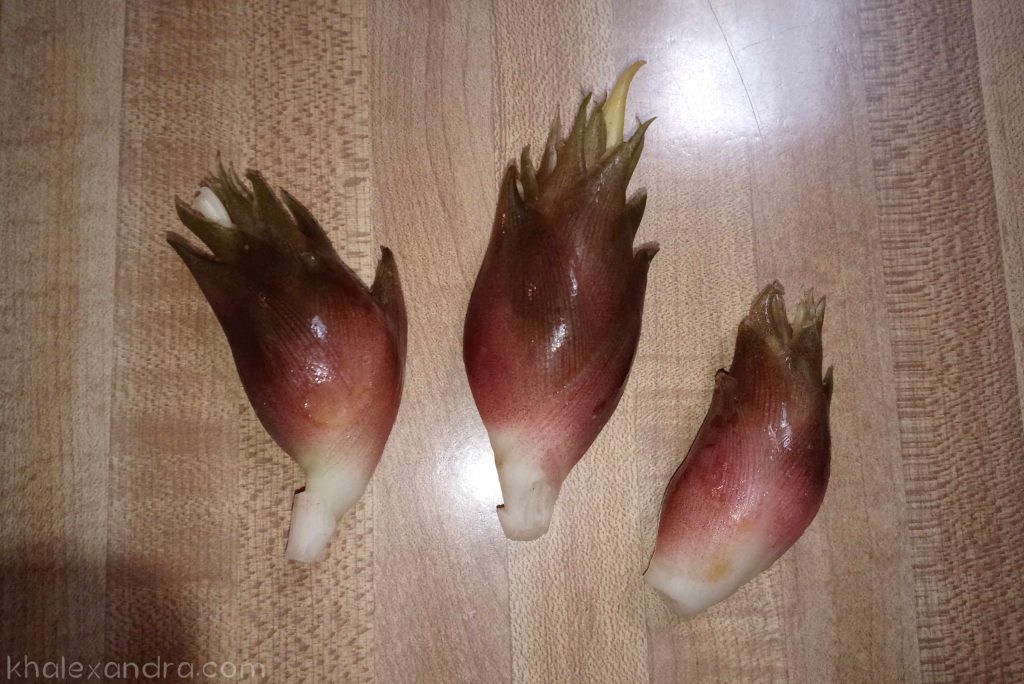Japanese Food Ingredients
This post may contain affiliate links, which means I'll receive a small commission if you purchase through my links, at no extra cost to you. Please read full disclosure for more information. Your support is appreciated!.
Kōso Drink (酵素ドリンク)

Vinegar drinks are popular in Japan. In actuality Kōso is a fermented juice, which is very good for the body. Any fermented food or drink promotes good digestion by giving the body nutrients, enzymes and vitamins, similar to probiotics. It has a strong taste. Many mix it with sparkling water.
Shiso (紫蘇, しそ)

Shiso is also called perilla or egoma. Any of these words will be on Japanese menus. The name shiso comes from the Chinese zǐsū. It is called beefsteak in the USA.
People in Japan boil red shiso and make juice out of it, and unlike the green variety, it must cooked before eating because of its bitter taste. The red shiso is boiled and made into juice, and unlike the green variety is usually cooked before eating (as the taste is more bitter).
In Japan, they commonly made a delicious drink from the red shiso leaves, by boiling the shiso leaves in water, straining the leaves from the pink juice, then adding sugar and vinegar. They frequently mixed this drink with sparkling water, much like kōso.
Kaki (Persimmon [柿])

Persimmon is the national fruit of Japan. They also grow in the United States and across the world.
People in Japan eat them immediately after harvest, which falls between October and December. They also hang and dry the persimmons, a process known as hoshigaki, and is quite delicious. Hoshigaki are sweeter and chewier than the fresh persimmon fruit.
Yuzu (柚子)

These are delicious citrus fruits that are common in Japan, and I saw them in many backyards. In fact, my friend in Japan had several yuzu trees on her property. Often made into juice and jam, yuzu also flavors many daifuku or mochi.
See this post on how my friend and I made Yuzu Jam.
Bamboo Shoots (筍)

In bamboo groves in Japan, the small fresh shoots come up in Spring. They often clear the shoots to prevent the groves from spreading too much. As a result, they are dug up, chopped and eaten. They are crisp and delicious.
To clean the Bamboo Shoot, peel the fuzzy leaves back, until the softer center looks similar to this:

You can then shave or peel it, like this:

After chopping the more tender center, it adds a delicious touch to various dishes like stir fried vegetables.
Sudachi (酢橘)

Another citrus fruit, sudachi are very acidic, so generally served with noodles.
A few of the other popular citrus fruits in Japan include: Kabosu, Hyūganatsu, Dekopon, Iyokan, Mikan, Shikuwasa, Amanatsu, and Aomikan
Smelt (ワカサギ)

There are different types of smelt, the “Shishamo” is the saltwater variety. I saw smelt in most of the grocery stores when I was in Japan. Once plentiful in the wild, the fish is now farmed as well. When deep-fried whole, they are delicious and nutritious.
Myoga (茗荷)

Myoga is Japanese ginger. Pictured here are the buds, which have a delicious, refreshing flavor.
The texture is reminiscent of onion but without the strong onion flavor, of course.
Dried Sweet Potato (干しいも)

They commonly grow sweet potatoes in Japan. After harvest of the sweet potato and steaming and drying, people can snack on sweet potatoes all winter long (if they last that long).
Kiwi Fruit (キウイフルーツ)

On my way to Japan for the first time, they served kiwi juice on the plane. Once I arrived, I asked my Japanese friends if kiwi juice is a common drink in Japan. They said no! However, the fruit is popular, and I worked at a kiwi grove to harvest kiwi while I was there. I guess the juice was a special treat for me.

Ume (Plum [梅])

Umeboshi (梅干し) is the term for the pickled plums as pictured below. Although tart by themselves, they are delicious with Camembert cheese and, of course, rice balls and candy.

